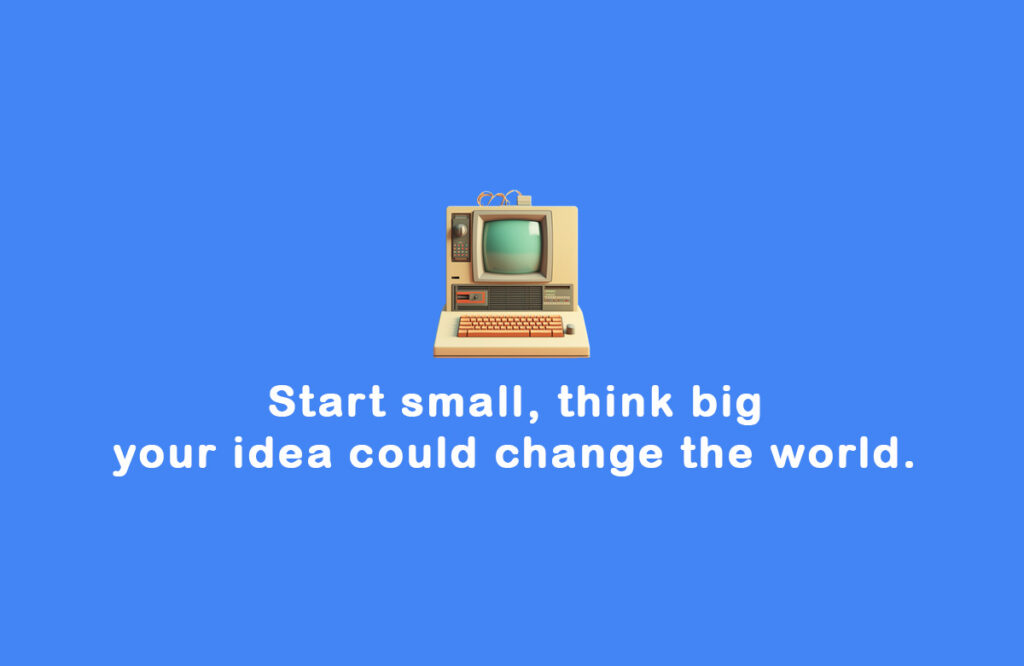In 1998, two Stanford University PhD students, Larry Page and Sergey Brin , started something extraordinary — not in a high-tech lab or a fancy office, but in a garage in Menlo Park, California . What began as an academic research project soon turned into one of the most powerful and influential companies in the world: Google.
Today, Google isn’t just a search engine — it’s a global tech giant with products like Android, YouTube, Chrome, Gmail, and even self-driving cars under its parent company Alphabet Inc. But behind this digital empire lies a story of curiosity, innovation, persistence , and the power of thinking big.
This is the inspiring journey of how two young minds changed the way we access information forever — from a garage to Google.
Early Life & Education
Larry Page
Born in 1973 in East Lansing, Michigan, Larry Page grew up surrounded by computers. His father was a computer science professor, and his mother worked in computer programming. From a young age, Larry was fascinated by technology and entrepreneurship.
Sergey Brin
Sergey Brin , born in Moscow in 1973, moved to the U.S. with his family at the age of six. His parents were both mathematicians and scientists. Sergey’s analytical mind led him to study mathematics and computer science at the University of Maryland before joining Stanford for his PhD.
At Stanford, their paths crossed — and history was about to be made.
The Birth of Google: A Research Project
Back in the late ’90s, the internet was growing rapidly, but finding relevant information was still a challenge. Search engines existed, but they weren’t very accurate.
Page and Brin began working on a research project that aimed to organize the web in a more effective way. Their idea was simple yet revolutionary: instead of judging a webpage based only on keywords, why not rank pages based on how many other pages linked to them?
They called their search engine “BackRub” because it analyzed backlinks to determine a page’s importance.
Eventually, they renamed it “Google” , a play on the word “googol”, which represents the number 1 followed by 100 zeros — symbolizing their mission to organize the vast amount of information on the web.
Moving Out of the Garage
By 1998, Google had outgrown the Stanford servers. With no funding and limited resources, the duo set up shop in a rented garage in Menlo Park , owned by friend and investor Susan Wojcicki (who later became CEO of YouTube).
With just $100,000 in seed money from angel investors, they built their first server using cheap parts, including Lego bricks for casing. This tiny garage became the birthplace of what would eventually become one of the most valuable companies in the world.
Their early days were filled with challenges:
- Limited funds
- Technical hurdles
- Skeptical investors
- No clear monetization strategy
But they kept pushing forward — fueled by their belief in making the world’s information accessible and useful.
First Investments and Growth
In 1999, Google received its first major investment of $25 million from venture capital firms Kleiner Perkins Caufield & Byers and Sequoia Capital . This allowed them to move into a proper office space and hire employees.
The team grew quickly. Google introduced new features like:
- Google News
- Google Images
- Google Maps
- Google Scholar
And in 2004, Google went public with an IPO that valued the company at over $23 billion .
Expansion and Innovation
After its initial success, Google didn’t stop. It kept innovating and expanding:
| YEAR | MAJOR MILESTONE |
| 2006 | Acquired YouTube for $1.65 billion |
| 2008 | Launched the Chrome web browser |
| 2010 | Introduced Google Buzz and Google Voice |
| 2012 | Acquired Motorola Mobility for $12.5 billion |
| 2015 | Created Alphabet Inc. as parent company |
| 2020-24 | Focused on AI, cloud computing, and quantum computing |
Each step brought Google closer to becoming a tech ecosystem , not just a search engine.
Google Today: More Than Just Search
Today, Google is part of Alphabet Inc. , a conglomerate that includes:
- YouTube
- Waymo (self-driving cars)
- DeepMind (AI research)
- Verily (life sciences)
- Wing (drone delivery)
Google’s tools are used by billions every day:
- Over 90% of global searches happen on Google
- More than 3 billion devices run on Android
- Gmail has over 1.5 billion users
- Google Maps helps millions navigate daily
All of this came from a small idea in a university dorm room — and then a garage.
Motivational Takeaways

Here are some key lessons we can learn from the journey of Larry Page and Sergey Brin :
- Start Small, Think Big
You don’t need a fancy office or millions in funding to start something great. All you need is a good idea and the courage to act on it. - Curiosity Drives Innovation
Page and Brin started with a research question. Their curiosity led them to build a tool that changed the world. - Persistence Pays Off
There were plenty of setbacks — lack of funding, technical issues, and competition. But they never gave up. - Teamwork Makes the Dream Work
While both had different personalities, their partnership was crucial to Google’s success. Collaboration brings out the best in people. - Never Stop Innovating
Even after massive success, Google continues to evolve. Whether it’s AI, robotics, or quantum computing, innovation is in their DNA.
Conclusion – The Legacy of Larry and Sergey
From a garage startup to a global tech titan , the journey of Larry Page and Sergey Brin is nothing short of inspirational. They remind us that greatness doesn’t always come from experience or status — sometimes, it comes from vision, hard work, and the willingness to take risks .
Their story proves that anyone, anywhere , can create something meaningful — if they believe in their idea and keep pushing forward.
So whether you’re an aspiring entrepreneur, a student, or someone with a dream, remember: your next big idea might just start in a garage — and end up changing the world.
